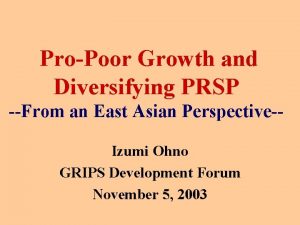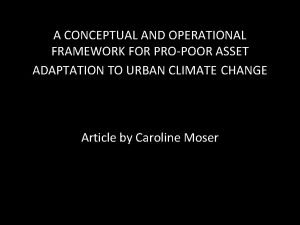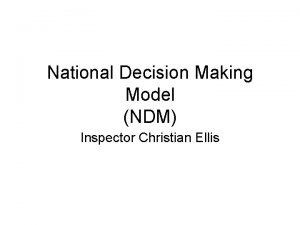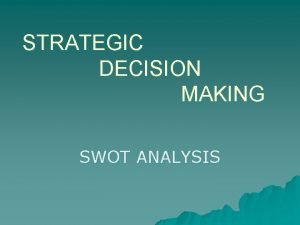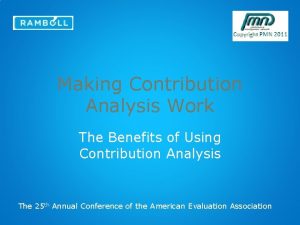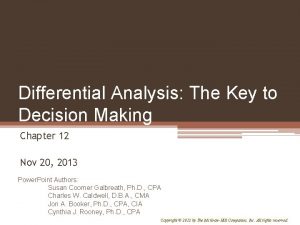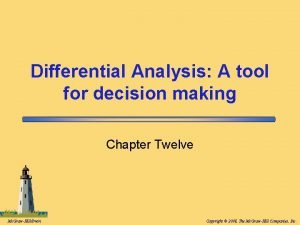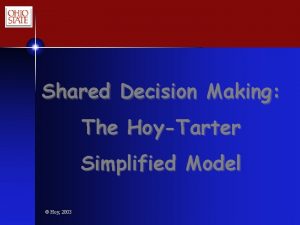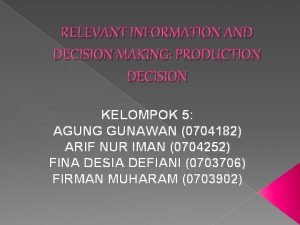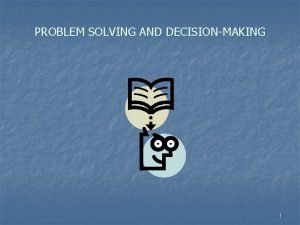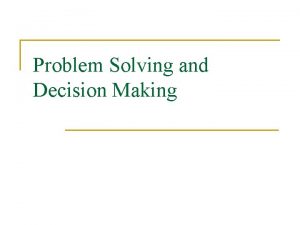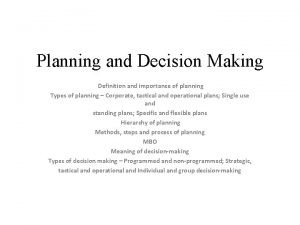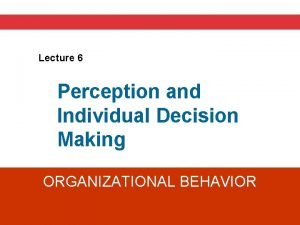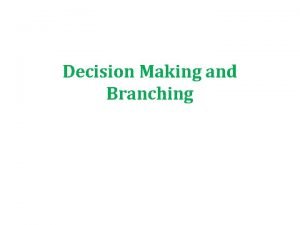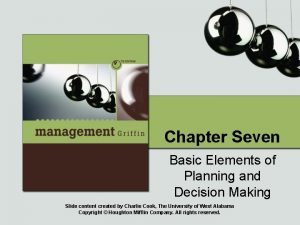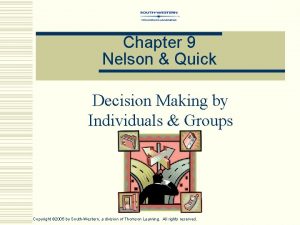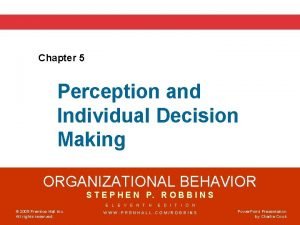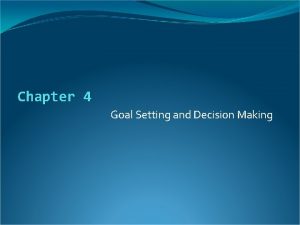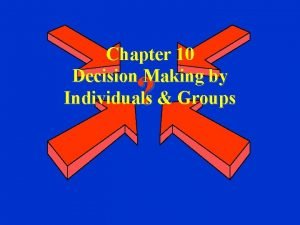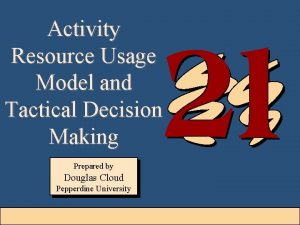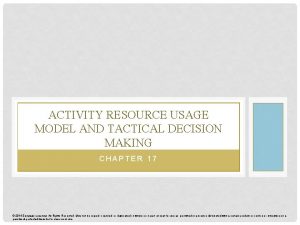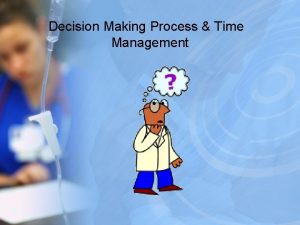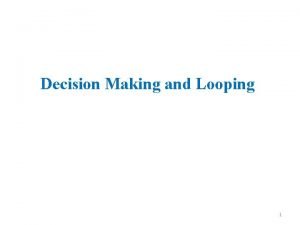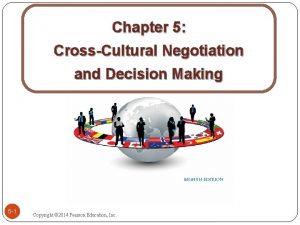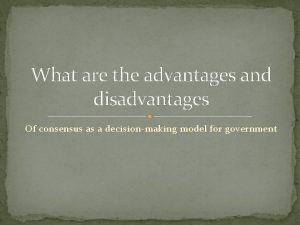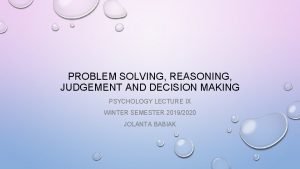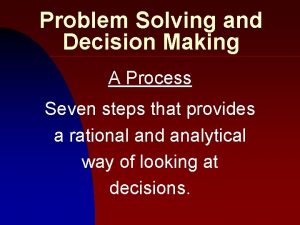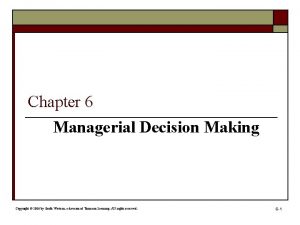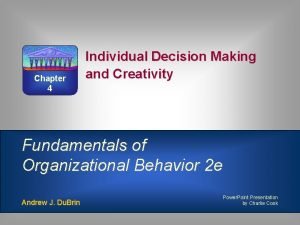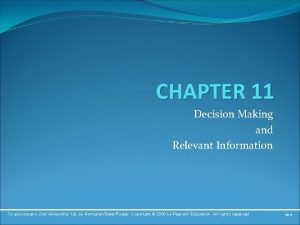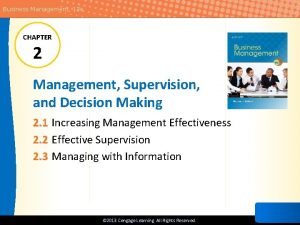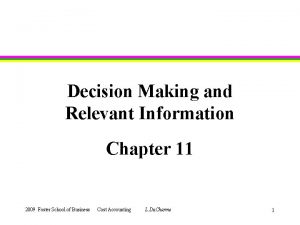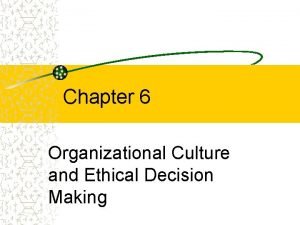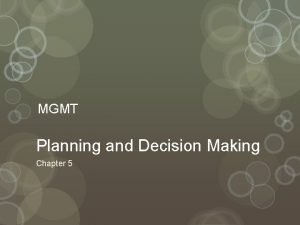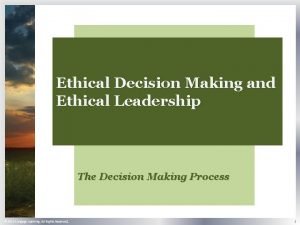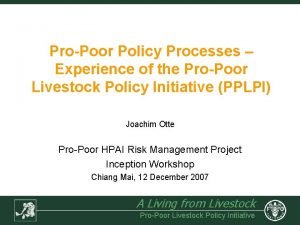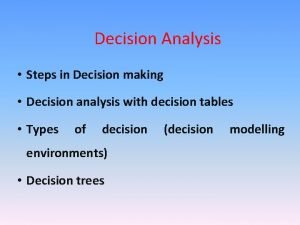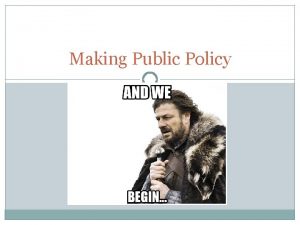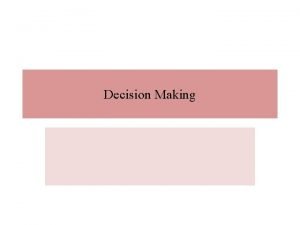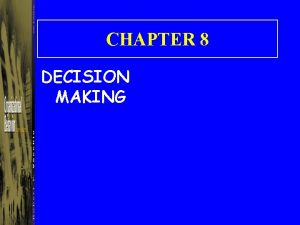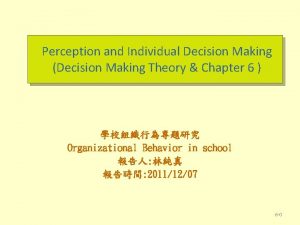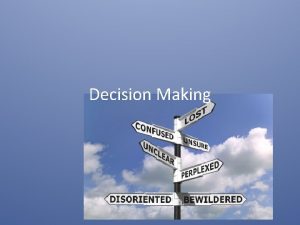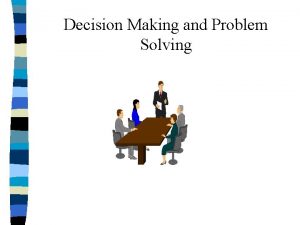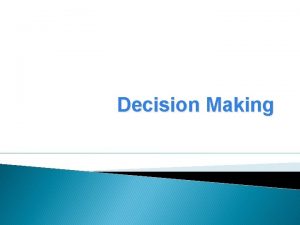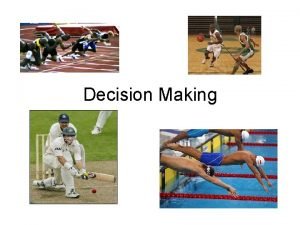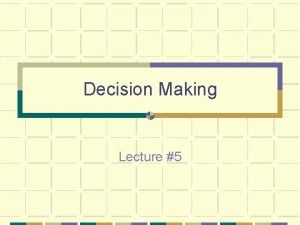ProPoor Policy Analysis for Decision Making and National

















































- Slides: 49

Pro-Poor Policy Analysis for Decision Making and National Planning Technical meeting, Food Security and PRSPs 18 -19 November 2004 FAO, Rome A Living from Livestock Pro-Poor Livestock Policy Initiative

What’s livestock got to do with it? • • • Asset-base for poor households • • Can increase the returns to household labour • Effective use of livestock can enhance productivity – can be fed crop residues, provide manure and traction • Increase household food security by spreading farm risk through diversification and creating employment opportunities both on and off the farm Instrument for savings and insurance Milk, meat and eggs are consumed at home – an important sources of nutrition, particularly for children Provide the landless poor an opportunity to convert common grazing land into private assets A Living from Livestock Pro-Poor Livestock Policy Initiative

Why policies and institutions? • Increasingly recognized that the process of development is strongly influenced by policies and institutions • For economic development to proceed, people need to trade with others • The more complex and impersonal trading links become, the higher the transaction costs • Thus for economic change and development to occur, a society must adapt existing institutions, or create new ones, that will permit increasingly complex market exchanges • Changing market and institutional environment may provide opportunities to accelerate poverty reduction A Living from Livestock Pro-Poor Livestock Policy Initiative

But. . . • Livestock sector policy in developing countries rarely favours the poor • Based on poor information and analysis • • Limited stakeholder consultation • “Rather they [. . ] are created to serve the interests of those with the bargaining power to devise new rules. ” (North, 1990) “Institutions are not [. . ] created to be socially efficient. ” (North, 1990) A Living from Livestock Pro-Poor Livestock Policy Initiative

Hence the need for policy analysis • Analyse the effects of existing policies on different groups of producers and consumers • Predict the impact of changing institutional and market environments on existing policy outcomes • Predict the impact of policy changes on different groups of livestock producers and consumers • Identify opportunities for intervention through adjustment of livestock-related policies • Help formulate policies consistent with equitable and sustainable livestock production A Living from Livestock Pro-Poor Livestock Policy Initiative

Pro-Poor Livestock Policy Initiative • • • Overall goal: Entry point: Mechanism: • Operationalized through: • • Poverty Reduction Livestock Policies and Institutions A Central Facility at HQ Regional Modules/Hubs A Living from Livestock Pro-Poor Livestock Policy Initiative

Role of the central facility • Fostering policy dialogue / promoting pro-poor livestock policies at international level • • • Cross-regional assessments of issues Standardizing approaches and methodologies Co-ordinating and fostering information exchange among the regional hubs and with other partners A Living from Livestock Pro-Poor Livestock Policy Initiative

Role of the regional hubs • Fostering policy dialogue / promoting pro-poor livestock policies at national and regional level • Identifying policy issues that impact directly on ultimate beneficiaries, i. e. poor livestock producers, processors and consumers • Enhancing local capacity for policy analysis, formulation and negotiation A Living from Livestock Pro-Poor Livestock Policy Initiative

Regional hubs South Asia India Nepal West Africa Senegal Burkina Faso Andean Region Peru Bolivia Horn of Africa Uganda Ethiopia Kenya South-East Asia Viet Nam Cambodia A Living from Livestock Pro-Poor Livestock Policy Initiative

PPLPI outputs Purpose Outputs Strengthened capacity of FAO member nations & international organizations to formulate [livestock] sector policies & implementation plans that reduce poverty whilst managing environmental and public health risks Increased awareness & consideration of the potential contribution of livestock to poverty red. Portfolio of livestockrelated policy interventions for poverty reduction, whilst …. Mechanisms for stakeholder representation & negotiation of policies & institutional changes … Effective systems for livestock policy information, analysis, decision support and M&E A Living from Livestock Pro-Poor Livestock Policy Initiative

Regional information systems IGAD Network of Data Providers and Users Djibouti Eritrea Ethiopia Kenya Livestock Policy Information System Trade Policies Somalia Sudan Uganda Biophysical Socio-economic Livestock Decision Support Tools Policy Recommendations Policy Analysis A Living from Livestock Pro-Poor Livestock Policy Initiative

Thematic layers • • • Biophysical resources Socio-economic data (census, survey etc. ) Livestock population and production Livestock health Trade in livestock and livestock products Livestock-related policies A Living from Livestock Pro-Poor Livestock Policy Initiative

Tools for policy analysis • Analysing the role of livestock • • Economic modelling • • Macro-micro CGE models Knowledge systems • • GIS analysis, household survey data analysis Policy Manuals Participatory decision support tools • EXTRAPOLATE A Living from Livestock Pro-Poor Livestock Policy Initiative

1. The role of livestock • • • Vietnam • Local spatially weighted regression Population (population census 1999) Poverty (VLSS 1997/98 & VHLSS 2002) Environmental data Accessibility A Living from Livestock Pro-Poor Livestock Policy Initiative

Poverty incidence and density A Living from Livestock Pro-Poor Livestock Policy Initiative

Environmental data Topography Land Cover A Living from Livestock Pro-Poor Livestock Policy Initiative

Environmental data Forest Soil Type A Living from Livestock Pro-Poor Livestock Policy Initiative

Environmental data Rainfall Temperature A Living from Livestock Pro-Poor Livestock Policy Initiative

Infrastructure and accessibility Infrastructure Accessibility A Living from Livestock Pro-Poor Livestock Policy Initiative

livestock holdings • Regional variation in livestock holding • • • North-South decline in the share of livestock-derived income in total income Dominance of pig-derived income in all regions, but less so in poorest regions Cattle relatively important in CH and SCC A Living from Livestock Pro-Poor Livestock Policy Initiative

Spatial aspects of livestock holding A Living from Livestock Pro-Poor Livestock Policy Initiative

Local spatially weighted regression • Local regression coefficients • Local indicators of goodness of fit A Living from Livestock Pro-Poor Livestock Policy Initiative

Local spatially weighted regression • • Based on traditional regression framework • • • Reveal local variation in spatial pattern • Divergence from global model can be tested Produces all standard regression output at local level (R 2, b, t, P) Parameters can be quantified for sub-regions Parameters and the reliability of estimates can be mapped A Living from Livestock Pro-Poor Livestock Policy Initiative

Local spatially weighted regression • Vietnam Household Living Standards Survey 2002 • over 2200 locational data points • nearly 45, 000 households • Dependant variables • Income, Expenditure • Poverty • Independent variables • Income composition • environmental variables • accessibility A Living from Livestock Pro-Poor Livestock Policy Initiative

Local spatially weighted regression Income source PIG POULTRY Per capita income vs. income composition A Living from Livestock Pro-Poor Livestock Policy Initiative

Local spatially weighted regression • Per capita income – pig and poultry • Clear relationship where the share of income from pig or poultry declines with rising per capita income • This relationship tends to exhibit the strongest negative coefficient in proximity to urban centers • There are two sub-urban areas near Hanoi and HCMC where the share of income derived from poultry tends to rise with rising per capita income A Living from Livestock Pro-Poor Livestock Policy Initiative

Local spatially weighted regression Income source PIG POULTRY Accessibility vs. income composition A Living from Livestock Pro-Poor Livestock Policy Initiative

Local spatially weighted regression • Road access – pig and poultry • Share of income derived from pig and poultry tends to increase with improved road access in areas where accessibility is generally low, whereas • an inverse relationship can be observed in areas where accessibility to roads is generally better • This pattern of spatial variation and change of sign in the relationship is stronger for poultry - easier to transport ? A Living from Livestock Pro-Poor Livestock Policy Initiative

Conclusions • • Locate poor livestock keepers • • Importance of different livestock types across space • • Analyze spatial variation in these relationships Visualize, communicate and disseminate spatial dimensions of patterns and trends in livestock holdings Identify and quantify relationships among poverty, livestock, environment and infrastructure Generate information to analyze policy impacts and to inform policy development A Living from Livestock Pro-Poor Livestock Policy Initiative

2. Economic modelling • • • Vietnam Northern Mountain Region Social Accounting Matrix Calculable General Equilibrium (CGE) model Poverty (VLSS 1997/98 & VHLSS 2002) Two policy scenarios A Living from Livestock Pro-Poor Livestock Policy Initiative

CGE modeling • Analytical tool to estimate impacts of economic policies on production structure, household income, poverty rates • • Aimed at policy makers and analysts • Elucidate complex direct and indirect linkages that determine the costs and benefits of policy implications Improve visibility for policy makers by identifying resource constraints, tradeoffs and adjustment challenges A Living from Livestock Pro-Poor Livestock Policy Initiative

Schematic modeling facility Social Accounting Matrix Household Survey Data Policy Scenarios (tariffs, taxes, etc. ) CGE model Sectoral Results (production, exports-imports) Household Results (income, expenditures, occupation) Poverty Mapping (incidence and inequality) A Living from Livestock Pro-Poor Livestock Policy Initiative

Northern Vietnam: CGE model • Prototype dynamic CGE micro-macro model developed for Northern Mountain Region of Vietnam • • 14 rural provinces and aggregated urban households Two scenarios for the 2004 -2010 period 1. 2. WTO accession Livestock productivity growth (livestock promotion policy) coupled with WTO accession A Living from Livestock Pro-Poor Livestock Policy Initiative

Northern Vietnam: preliminary results • • Scenario 1 (WTO only) • Most benefits to urban populations where significant poverty reduction occurs (21%) • Some gains propagated to the rural poor but to a much lesser degree (1%) • in some provinces poverty even increases in the first two years. Scenario 2 (WTO plus production increase) • • Poverty reduction is less in urban areas (7%) • Over 27% of population in the region escape poverty more significant gains in rural provinces where poverty is reduced more than 30 percent A Living from Livestock Pro-Poor Livestock Policy Initiative

Scenario 2 (WTO + production increase) 170 Dynamic of household income growth 160 Ha giang Cao bang Lao cai Bac can Lang son Tuyen quang Yen bai Thai nguyen Phu tho Bac giang Quang ninh Lai chau Son la Hoa binh Urban Households Index (2004 = 100) 150 140 130 120 110 100 90 2004 2005 2006 2007 2008 2009 2010 A Living from Livestock Pro-Poor Livestock Policy Initiative

3. Knowledge systems • • • Uganda Policy Manuals Pastoralist livelihoods A Living from Livestock Pro-Poor Livestock Policy Initiative

Policy Manuals • Objective • • Approach • • • Inform the decision making processes Facilitate access to knowledge about the subject Enable decision makers to benefit from experiences in other areas Identify ‘Frequently Asked Questions’ for particular themes Develop the knowledge architecture around these questions Information and knowledge • • • Published sources in the public domain Official and personal communications Individuals / organizations with specific expertise and experience A Living from Livestock Pro-Poor Livestock Policy Initiative

Policy Manuals • • • Target audience • • Decision makers in national and local government National and international development agencies Technology platform • • Internet-based interactive database system “Current version” uploadable to CD Themes (initially) • • Delivery of animal health services Linking smallholders to markets Supporting pastoralist livelihoods Smallholder dairy development A Living from Livestock Pro-Poor Livestock Policy Initiative

Pastoralist livelihoods - Uganda • How to enhance pastoralist integration and competitiveness in markets? • How to conserve and develop the pastoralist natural resource base? • How to empower pastoral institutions to enhance pastoralist production ? • How to best harness public investment to support pastoralist development? A Living from Livestock Pro-Poor Livestock Policy Initiative

4. Participatory decision support tools • • • Uganda Model for pro-poor stakeholder analysis Stakeholder analysis EXTRAPOLATE Field testing in five regions A Living from Livestock Pro-Poor Livestock Policy Initiative

Model for pro-poor policy analysis Actual beneficiaries Constraints Groups of potential beneficiaries Opportunity Policy change Trade-offs Key Stakeholders Constraints A Living from Livestock Pro-Poor Livestock Policy Initiative

Stakeholder analysis – Uganda Farmers’ Organizations – UNFU, Local Organizations Research – NARO, Universities, Int. Organizations Parliament Legislation MTIP Finance Policy PEAP Autonomous – DDA, COCTU NAGRC&DB NGOs – Panos, Oxfam, HPI, Send-a-Cow, Land O’ Lakes UPPAP PMA Private Sector – Services, Traders. . Government – Local Govt. , Other Ministries, Bureaus MAAIF International – • NEPAD-CAADP • Donors (Df. ID, USAID, DANIDA, EC, etc. . . ) • Banks (WB, ADB) A Living from Livestock Pro-Poor Livestock Policy Initiative

EXTRAPOLATE A Living from Livestock Pro-Poor Livestock Policy Initiative

EXTRAPOLATE • • Identify development opportunity / commodity • Estimate the impact of each outcome on the livelihood status of each beneficiary group • Estimate the impact of policy changes with respect to each constraint Identify beneficiary groups – determine livelihood status Determine constraints faced by different groups Determine outcomes – the measurable effects of relaxing constraints A Living from Livestock Pro-Poor Livestock Policy Initiative

Ex-ante analysis of policy change A Living from Livestock Pro-Poor Livestock Policy Initiative

Ex-ante analysis of policy change A Living from Livestock Pro-Poor Livestock Policy Initiative

Field testing and development • • • Uganda – small holder dairy Senegal – small ruminants (Tabaski feast) Peru – camelid fibre India (AP) – small ruminants Viet Nam – small holder pork A Living from Livestock Pro-Poor Livestock Policy Initiative

Collaborators • • • PPLPI – regular staff and consultants Many counterparts in Uganda and Vietnam Prof. David Roland-Holst (Berkley) Dr Phil Thornton (ILRI) Dr Peter Thorne Mr Michael Epprecht (IFPRI) A Living from Livestock Pro-Poor Livestock Policy Initiative

Thank You A Living from Livestock Pro-Poor Livestock Policy Initiative
 Propoor
Propoor Propoor
Propoor Objectives of decision making
Objectives of decision making Slidetodoc.com
Slidetodoc.com National decision making model police
National decision making model police Swot analysis decision making
Swot analysis decision making Sebastian lemire
Sebastian lemire Differential analysis the key to decision making
Differential analysis the key to decision making Differential analysis the key to decision making
Differential analysis the key to decision making Decision tree and decision table examples
Decision tree and decision table examples Using recursion in models and decision making
Using recursion in models and decision making Using functions in models and decision making
Using functions in models and decision making Chapter 6 prices and decision making assessment answers
Chapter 6 prices and decision making assessment answers Model hoy
Model hoy Decision making and relevant information
Decision making and relevant information Best books on problem solving and decision making
Best books on problem solving and decision making Individual and group decision making
Individual and group decision making Individual and group decision making
Individual and group decision making Perception and individual decision making
Perception and individual decision making Five step decision making process
Five step decision making process A is a choice made from among available alternatives
A is a choice made from among available alternatives Chapter 2 economic systems and decision making answer key
Chapter 2 economic systems and decision making answer key Decision making and branching in c
Decision making and branching in c What are the basic elements of planning
What are the basic elements of planning Individual and group decision making
Individual and group decision making Management chapter 5 planning and decision making
Management chapter 5 planning and decision making What they see
What they see Decision making goal setting
Decision making goal setting Chapter 2 economic systems and decision making
Chapter 2 economic systems and decision making Individual and group decision making
Individual and group decision making Activity resource usage model and tactical decision making
Activity resource usage model and tactical decision making Activity resource usage model and tactical decision making
Activity resource usage model and tactical decision making Decision making process definition
Decision making process definition Exit controlled loop flowchart
Exit controlled loop flowchart Cross cultural negotiation and decision making
Cross cultural negotiation and decision making Relevant information for decision making
Relevant information for decision making Disadvantages of consensus decision-making
Disadvantages of consensus decision-making Reasoning judgement and decision making
Reasoning judgement and decision making 7 steps of problem solving and decision-making
7 steps of problem solving and decision-making Chapter 2 economic systems and decision making
Chapter 2 economic systems and decision making Example of non programmed decision
Example of non programmed decision Sports and entertainment marketing team decision making
Sports and entertainment marketing team decision making 6 step decision making process
6 step decision making process Decision making and creativity organizational behavior
Decision making and creativity organizational behavior Chapter 11 decision making and relevant information
Chapter 11 decision making and relevant information Chapter 2 management supervision and decision making
Chapter 2 management supervision and decision making Decision making and relevant information
Decision making and relevant information Organizational culture and ethical decision making
Organizational culture and ethical decision making Options-based planning
Options-based planning Ethical habits
Ethical habits
